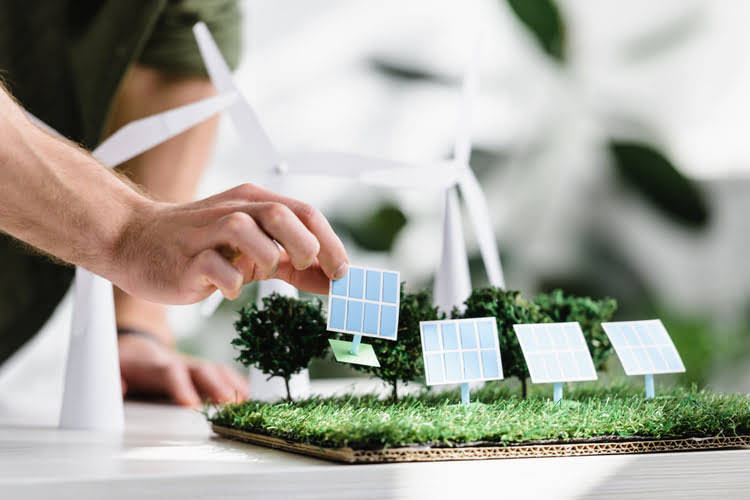Specific outcomes can include clearer accounting processes, easier staff training, reduced inefficiencies, and improved transparency in compliance and risk mitigation efforts. With the finalized trial balance, you’ll prepare the final financial statements. You’ll need to review each transaction to find out which accounts it affects and how to record it. It’s good practice to make this an ongoing step to lighten your workload at the end of each accounting period. Journal entries provide a detailed record of financial activities, making tracking and understanding the flow of funds within the company easier. They serve as the primary source for posting data to the general ledger.
Step 1. Identify your transactions
The accounting cycle is the process of recording financial transactions and reporting activity within a business. The accounting cycle provides a framework for recording transactions and checking them for accuracy before they make it to the financial statements. The software auto-generates financial statements so you can directly close your how to calculate beginning and ending inventory costs books at the end of the reporting period. This saves plenty of money you’d have spent on maintaining books and correcting errors. Of course, you might need to get your financial statements audited by a CPA if you’re a public company.
The 8 steps of the accounting cycle
To ensure consistency and transparency in financial reporting, companies in the U.S. adhere to Generally Accepted Accounting Principles (GAAP). GAAP, enforced by the Financial Accounting Standards Board (FASB), governs many aspects of accounting, from revenue recognition to the classification of balance sheet items. For example, the cycle ensures that all revenue earned during a period is matched with the related expenses, adhering to the matching principle.
Before these records are finalized and shared, you’ll want to perform a last review for accuracy. Upon their authorization, the financials from the month can be officially closed, allowing no further amendments or changes. And without a formalized routine guiding your closing efforts, irregularities or unknown variables can creep into your reports and mislead key decision makers. Documenting compliance and risk mitigation processes with flowcharts ensures transparency and encourages consistency. It also allows for periodic review of compliance and risk measures relative to current regulations and evolving threats.
Statement of Cash Flows
Whether you’re a seasoned business owner or just starting, understanding and mastering the accounting cycle is crucial for success. Accounting software automates various accounting tasks, such as recording transactions, generating financial statements, and performing calculations. It enhances efficiency, accuracy, and data accessibility, streamlining the accounting cycle and reducing manual efforts. Analyzing transactions is necessary to determine their financial impact and classify them into appropriate accounts. This step ensures that financial data is recorded accurately and helps in the preparation of reliable financial statements.
What is the accounting cycle? The 8 steps explained
- It ensures that all business transactions are captured, processed, and presented in a way that supports accurate decision-making and regulatory compliance.
- The best approach to do that is to create a system where every transaction is automatically captured because that prevents human error.
- If any discrepancies are spotted, adjustment entries must be made to remedy them.
- Throughout this section, we’ll be looking at the business events and transactions that happen to Paul’s Guitar Shop, Inc. over the course of its first year in business.
- Upgrading these with technology can create quick efficiency wins for your business.
- Known as the “trial balance,” this provides insight into the financial health of your company and can help you identify any discrepancies in your bookkeeping.
It can also help you identify errors sooner because more people are reviewing the information. After recording the transactions in the journal, you’ll move or “post” them to the general ledger. This is your master accounting document, with a separate page for what is a bookkeeper and when do i need one each account.
Adjust Journal Entries
After the reversing entries are posted, the accounting cycle starts all over again with the occurrence of a new business transaction. Once you identify your business’s financial accounting transactions, it’s important to create a record of them. You can do this in a journal, or you can use accounting software to streamline the process. The total credit and debit balance should be equal—if they don’t match, there’s an error somewhere. The unadjusted trial balance is the initial version of the trial balance that hasn’t been analyzed for accuracy and adjusted as needed. The federal government’s fiscal year spans 12 months, beginning on October 1 of one calendar year and ending on September 30 of the next.
- Some companies prepare financial statements on a quarterly basis whereas other companies prepare them annually.
- For example, the cycle ensures that all revenue earned during a period is matched with the related expenses, adhering to the matching principle.
- Schedule a demo today, and experience how hassle-free your closing efforts can be.
- The first step to preparing an unadjusted trial balance is to sum up the total credits and debits in each of your company’s accounts.
- Again, you’ll at least want to make a balance sheet, income statement, and cash flow statement.
- Once transactions are analyzed, they are recorded chronologically in special journals like the sales journal, purchases journal, cash receipts journal, and cash disbursements journal.
After the adjusted trial balance is created, the temporary accounts are closed to the permanent accounts with a series of closing journal entries. All of the income and expense accounts are typically closed to a general income summary account, which is later closed to the retained earnings or capital account. The general ledger is the official record of the accounting period. It includes beginning balances for each account, all transactions impacting those accounts during the accounting period, and each account’s ending balance.
Further, you can eliminate unnecessary process delays caused by waiting for staff to begin the next step in the chain. As previously mentioned, there are typically general guidelines regarding what information you’ll need to use and how it should be managed. However, the individual business has a lot of nuance regarding the actual execution of the reporting efforts. As such, we recommend that you draft an internal plan outlining specific actions and then repeat those steps every month without variance. With that understanding, you can quickly recognize optimization opportunities within your firm. As an example, flowcharts differentiate manual from automated processes.
Are bookkeeping and accounting different?
Adjustments include the recording of depreciation expense, the gradual release of prepayments, and the recording of earned revenue from unearned revenues at the end. At the end of the accounting period, you’ll prepare an unadjusted trial balance. Finally, you need to post closing entries that transfer balances from your temporary accounts to your permanent accounts.
With accrual accounting, journal entries are made when a good or service is provided rather than when it is paid for. One of the main duties of a bookkeeper is to keep track of the full accounting cycle from start to bookkeeping and accounting services for truckers finish. The cycle repeats itself every fiscal year as long as a company remains in business. Having updated and ensured the accuracy of your general ledger and other records, you’ll generate the relevant documents (see above list) to produce your month-end report.
Essentially, it is a huge compilation of all transactions recorded on a specific document or in accounting software. The accounting cycle incorporates all the accounts, journal entries, T accounts, debits, and credits, adjusting entries over a full cycle. And thanks to the capabilities delivered by Flywire software, this cash application can be readily applied to payments from across the globe in 140 different currencies. Give yourself sufficient time to complete your month-end close without rushing. While streamlining and accelerating processes can be helpful, don’t employ any strategies or shortcuts that put the accuracy of your data or final records at risk. Within your accounting practice, there are many processes you can use to practice your flowcharting skills.
If you use accounting software, this usually means you’ve made a mistake inputting information into the system. The general ledger is like the master key of your bookkeeping setup. If you’re looking for any financial record for your business, the fastest way is to check the ledger. Next, you’ll use the general ledger to record all of the financial information gathered in step one. Recording entails noting the date, amount, and location of every transaction.
The general ledger (GL) is a master record of all transactions categorized into specific categories such as cost of goods sold (COGS), accounts payable, accounts receivable, cash, and more. Each step in the accounting cycle is equally important, but if the first step is done incorrectly, it throws off all subsequent steps. If you don’t track your transactions accurately, you won’t be able to create a clear accounting picture. An example of an adjustment is a salary or bill paid later in the accounting period. Because it was recorded as accounts payable when the cost originally occurred, it requires an adjustment to remove the charge.








